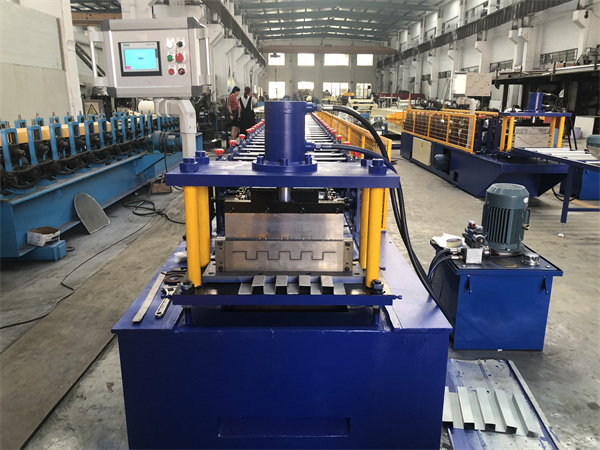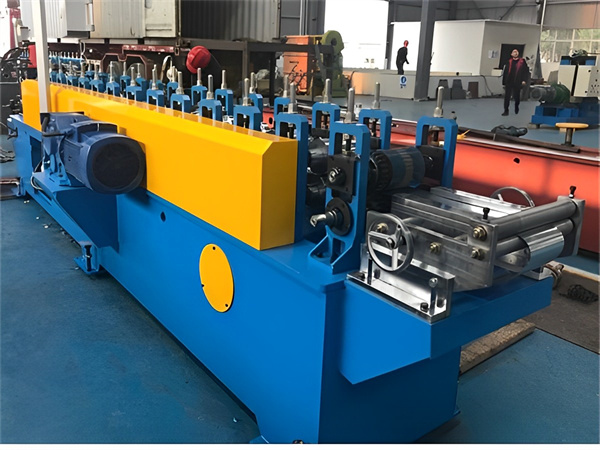Introduction
In the realm of modern manufacturing, sheet metal roll forming machines stand out as essential tools that have revolutionized the production of various metal products. These machines play a pivotal role in shaping flat metal sheets into complex and precise profiles used in a multitude of industries. Let’s delve into the intricacies of sheet metal roll forming machines, their advantages, types, components, and applications.
Understanding the Roll Forming Process
The Role of Sheet Metal Roll Forming Machines
Sheet metal roll forming machines are at the heart of the roll forming process. Roll forming is a continuous bending operation where a flat strip of metal is progressively shaped through a series of forming stations. These machines meticulously shape the metal by passing it through sets of rollers and forming dies, resulting in the desired cross-sectional profile.
Explaining Roll Forming Steps
The roll forming process involves several key steps that ensure the accurate transformation of flat metal into intricate shapes. The raw material, usually in coil form, passes through an uncoiler and a series of rollers. Each roller set imparts a specific bend or contour to the metal until the final profile is achieved. The continuous nature of this process enables high-volume production with remarkable precision.

Advantages of Sheet Metal Roll Forming Machines
High Precision and Consistency
One of the standout advantages of sheet metal roll forming machines is the exceptional precision and consistency they offer. The use of multiple forming stations and precise tooling results in products with uniform dimensions and consistent quality. This level of accuracy is crucial in industries where tight tolerances are non-negotiable.
Cost Efficiency in Mass Production
In industries that demand large quantities of custom-shaped metal components, roll forming machines shine in terms of cost-efficiency. Once the initial tooling is set up, the production process becomes streamlined and quick, making it ideal for high-volume manufacturing. The reduced need for manual intervention further enhances cost-effectiveness.
Types of Sheet Metal Roll Forming Machines
Single-Stand Roll Forming Machines
Single-stand roll forming machines are the simplest form of roll formers, consisting of a single set of rollers and forming dies. They are well-suited for simpler profiles and lower-volume production. These machines find their place in applications where flexibility and quick setup are essential.
Multi-Stand Roll Forming Machines: On the other end of the spectrum, multi-stand roll forming machines feature multiple sets of rollers and forming stations. This design allows for the creation of intricate profiles with more complex bends and shapes. Industries that require diverse product offerings often rely on multi-stand roll formers.
Automated Roll Forming Lines: Automated roll forming lines integrate various processes, including material handling, roll forming, and cutting. These lines minimize human intervention, enhance production speed, and reduce the risk of errors. They are commonly used in industries with high-volume demands and stringent quality requirements.
Key Components of Sheet Metal Roll Forming Machines
Uncoiler and Coil Car
The roll forming process begins with the uncoiler, which feeds the flat metal coil into the forming machine. A coil car assists in loading heavy coils onto the uncoiler. These components ensure a steady supply of material during production.
Feeding System: The feeding system guides the metal strip through the forming stations. It maintains consistent material tension and alignment, which is crucial for accurate profile shaping.
Rollers and Tooling: The heart of the roll forming process lies in the rollers and forming dies. These are meticulously designed to shape the metal strip into the desired cross-sectional profile. Roll design and material selection play a pivotal role in achieving precision.
Cutting Mechanism: Once the desired profile is formed, the sheet metal needs to be cut to the required length. Various cutting mechanisms, such as flying cut-off and post-cut systems, are employed based on the application’s needs.

Applications and Industries
Automotive Sector
In the automotive industry, sheet metal roll forming machines are instrumental in producing structural components, body panels, and intricate profiles used in vehicle frames. The high precision and repeatability of roll forming make it a preferred method for maintaining the structural integrity and safety of automobiles.
Construction and Architecture: Roll forming plays a significant role in the construction sector, producing components for roofing, wall cladding, and framing systems. The versatility of roll forming machines allows architects and builders to realize complex designs with ease.
HVAC Systems: Heating, ventilation, and air conditioning systems rely on roll-formed components for ductwork and other critical parts. The uniformity and durability offered by roll forming ensure the efficient functioning of these systems.
Design Considerations for Roll Forming
Material Selection
The choice of material greatly impacts the roll forming process and the final product’s quality. Factors such as material ductility, strength, and surface finish influence the feasibility of the chosen profile design.
Profile Design and Tooling: The shape and complexity of the desired profile dictate the design of the forming dies and rollers. Collaborative efforts between engineers and roll forming experts are essential to create efficient and precise tooling.
Machine Customizability: Roll forming machines should be adaptable to accommodate various profiles and materials. Quick changeover capabilities and adjustable tooling setups enhance the machine’s versatility.
Maintaining and Troubleshooting Roll Forming Machines
Regular Maintenance Practices
To ensure consistent performance and longevity, regular maintenance is crucial for roll forming machines. Lubrication of moving parts, inspection of rollers and tooling, and calibration of cutting mechanisms are among the routine tasks that prevent downtime and maintain product quality.
Identifying and Resolving Common Issues: Roll forming machines might face challenges like material deformation, misalignment, or tool wear. Swift identification and resolution of these issues are vital to prevent production delays and uphold product quality.
Future Trends in Sheet Metal Roll Forming
Incorporation of AI and Automation
As manufacturing embraces Industry 4.0 principles, sheet metal roll forming machines are likely to integrate artificial intelligence and automation. Predictive maintenance, real-time quality control, and adaptive forming based on data analytics will redefine the capabilities of these machines.
Sustainable Roll Forming Techniques: With a growing emphasis on sustainability, the roll forming industry is exploring eco-friendly materials and energy-efficient processes. This shift aligns with the global push towards reducing the environmental impact of manufacturing.

Conclusion
In the dynamic world of manufacturing, sheet metal roll forming machines have earned their place as indispensable tools that shape the future of various industries. With their precision, efficiency, and adaptability, these machines continue to push the boundaries of what’s achievable in modern production. As technology evolves, we can anticipate even more innovative applications and techniques that will further solidify the role of sheet metal roll forming machines in shaping our world.
Frequently Asked Questions
- What is a sheet metal roll forming machine? A sheet metal roll forming machine is a manufacturing equipment that shapes flat metal sheets into intricate profiles through a continuous bending process.
- What industries benefit from sheet metal roll forming? Sheet metal roll forming finds applications in industries such as automotive, construction, architecture, and HVAC systems due to its precision and efficiency.
- How do roll forming machines ensure profile accuracy? Roll forming machines use a series of rollers and forming dies, carefully designed to shape the metal strip accurately, resulting in uniform profiles.
- What are the advantages of multi-stand roll forming machines? Multi-stand roll forming machines are capable of creating complex profiles with intricate bends, making them suitable for industries that require diverse product offerings.
- How does automation impact the future of roll forming? Automation, coupled with AI, is set to revolutionize roll forming by enabling predictive maintenance, real-time quality control, and adaptive forming techniques based on data analysis.
